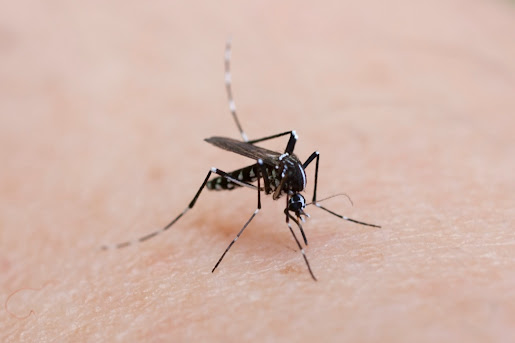
What are biting midges—and do you need to worry about these common pests? If you spend time outdoors, chances are you’ve come across these barely-visible flies. Biting midges are found in plenty of exterior areas. But when your yard is their target, you need professional help. Read on to what you need to know about these tiny flies, their bites, and pest control options.
There Isn’t Just One Type of Biting Midge
According to Purdue University, more than 600 species of biting midges are found in North America. Worldwide, over 4,000 of these pint-sized pests infest outdoor areas. Even though there are hundreds of midge species in North America, it isn’t necessary for homeowners to learn the identifying characteristics of each one. Leave this job to the pest control professional.
All biting midge species are small. Most adults are less than ⅛-inch long, according to the University of Florida. The wing color and pattern varies between species (helping pros to identify the different types). The majority of midges have gray bodies as adults. After the midge feeds on blood, it may have a reddish appearance.
There Isn’t Just One Stage in the Biting Midge’s Lifecycle
You’re searching for barely-there gray bugs with wings, but you don’t see any in your yard. Biting midges change throughout their lifecycle. Larvae look like small white or yellowish worms. Some may have a caterpillar-like appearance and false legs. The larvae live and grow in water or semi-aquatic habitats. After the larval stage, the midge goes through a pupal stage. The pest then metamorphosizes into a full-grown adult.
There Are Plenty Feeding Sources for Midges Outdoors
Even though midges bite, they don’t only feed on blood sources. The pest also feeds on plant nectar and sap. Midges use these plant products as their primary energy source. While nectar and sap can power the tiny biting midge and keep it flying, the pest also requires protein to make eggs and reproduce. The biting midge uses bodily fluids from other insects along with blood from animals for this purpose.
Biting midges may bite humans—but people aren’t their only or primary blood-meal source. This pest also bites sheep, cattle, or any other mammal they can find outdoors.
There Aren’t Significant Public Health Issues
Unlike mosquitoes and some other biting bugs, the midge isn’t responsible for a significant number of illnesses. In general, the biting midge doesn’t pose a high public health risk. But this doesn’t mean you will want a colony to form in your yard or that you should leave the midges as-is. While the midge doesn’t always bite humans, it can and does.
Allergic reactions are one of the most common problems these pests cause. While an itchy bump may just seem annoying, several bites or persistent bites over time can stop you from enjoying your home’s outdoor area. This can make it difficult to entertain, garden, or spend time outside with your pets. Likewise, if the midges enter your home (through windows or doors), you could have to contend with unexpected indoor bites.
There Are Ways To Stop Biting Midges
Prevention is the first step to stopping the biting midge. Remove potential breeding grounds, such as wading pools, puddles, buckets, or planter pots left outdoors. Aquatic and semi-aquatic midge larvae can’t grow if they don’t have a water source to live in.
If you have concerns about biting midges invading your home, keep them out with screens. You can also use screens and netting to stop a midge invasion on a deck or patio.
Have midges already invaded your exterior or indoor space? Before you attempt a DIY method, call a pest control professional. An exterminator can evaluate the area, inspect for biting midges, and recommend a treatment plan to stop the invaders and reduce the risks of bites. Contact The Mosquito Masters for more information on pest control services.
